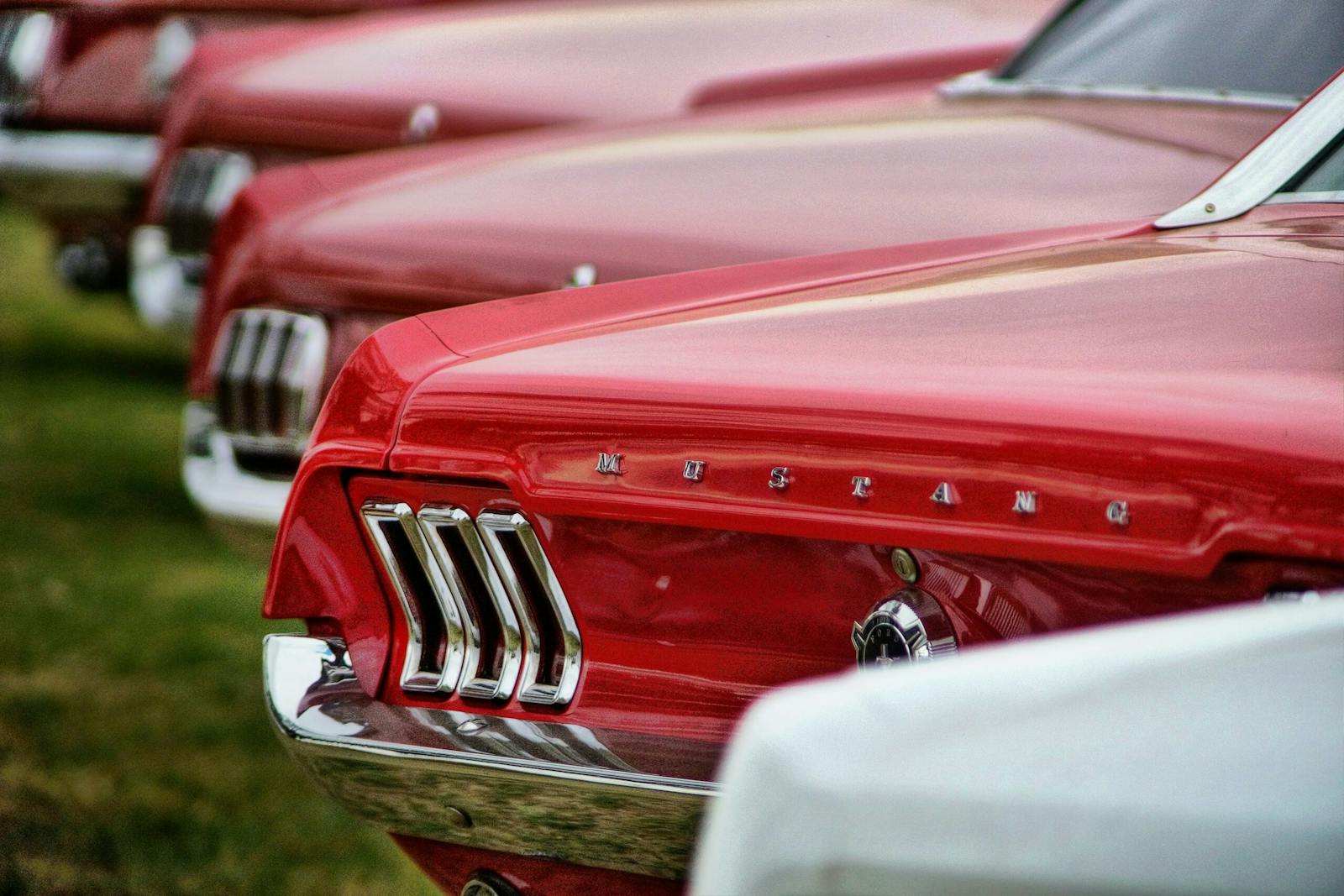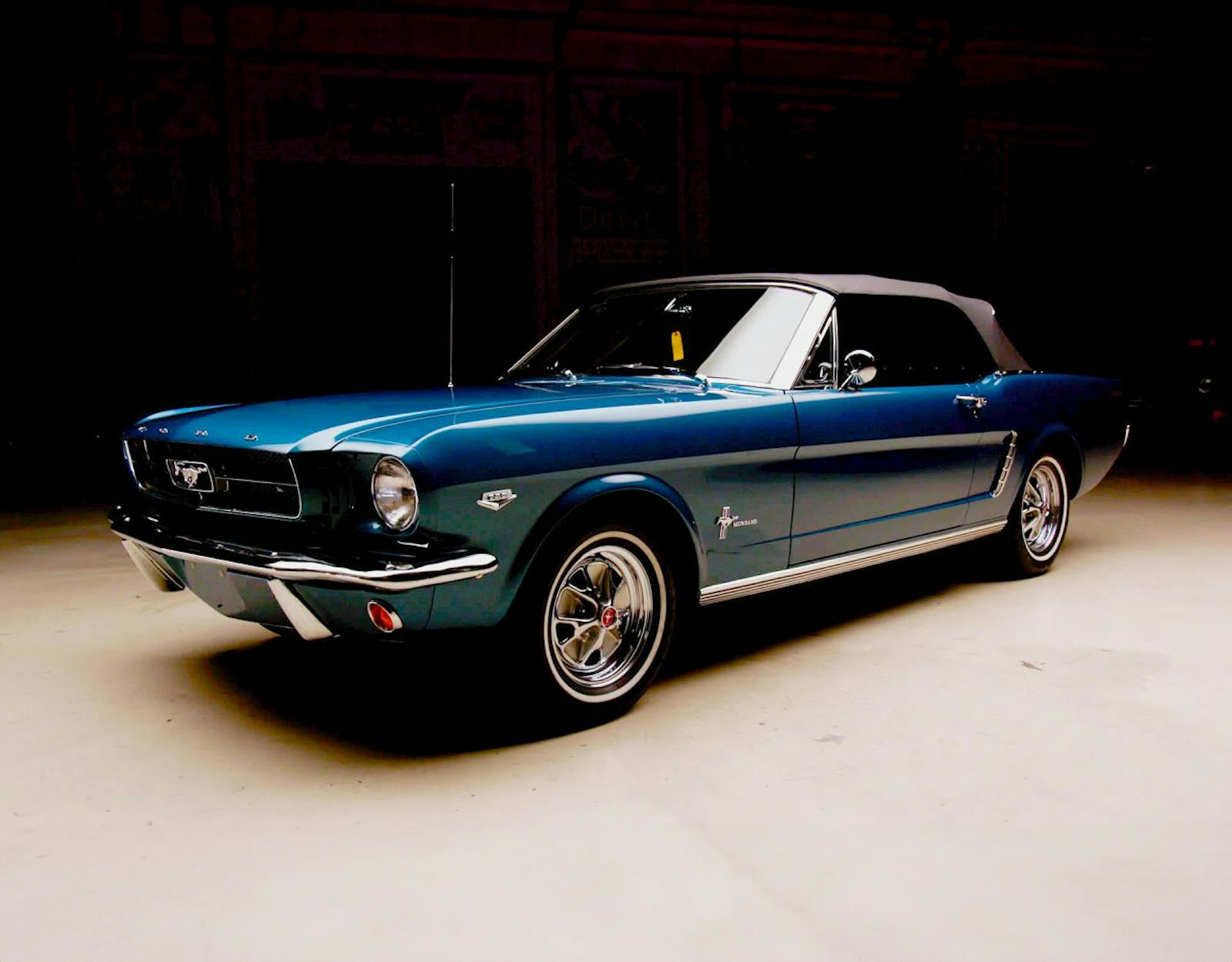A (welcome) sense of caution in the air—what insiders say about the present market
It’s one thing to look at your car’s gauges to get a feel for how it’s operating. Sometimes, though, you need a more seat-of-the-pants take. If you’re really in tune with your ride, you can tell by subtle vibrations or additional pitch through a corner that something’s amiss. A similar scenario plays out for reading the market here at Insider: we have our trusty metrics and data, but we also like to check with industry pros to get a more direct feel for how it’s handling.
A short 30 days after Monterey, our market meter has swung upward again. It didn’t feel quite the same as other recent spikes, though. We reached out to some individuals to get their take on where the market stands, takeaways from the California auctions, and emerging trends. Here are their thoughts.
The world doesn’t end very often
“There was a whiff of caution in the air, and that’s why I liked it,” Mark Hyman, Founder of Hyman Ltd Classic Cars, said of Monterey. “The market went from irrational exuberance in 2021 to solid, rational demand over the course of this year, and you saw that at last month’s auctions.” He went further to emphasize that while lingering macroeconomic storm clouds continue to demand vigilance, he believes the market has reached a point of stability for now. “The world doesn’t end very often…there’s still a tremendous amount of demand, interest, and money in the market.”
Zac Beatty, Director of Auction Operations and Customer Experience at Bring a Trailer, agreed: “the market as a whole remains strong from the perspective of both volume of cars transacting and the dollar amounts where they are selling.” He added that volume is up 30% year over year for the popular auction site while sales rates across 700 vehicles per week is only down 5%. “That said, it’s fair to say segments of the market are exhaling a bit from what we have seen as a huge run up over the past two years. Not every three-digit mileage first-gen Ford GT is a half a million dollar car today and not every Porsche with an RS badge on the back that comes to market is establishing a new record, but the bottom certainly isn’t falling out of those markets either and glass half-full types still see how much higher these cars are transacting from just a couple years ago.”
“It’s a more rational time than 2021,” agreed Derek Tam-Scott, of Issimi. “Folks using stock or crypto revenue to buy cars are being more conservative, but the top of the market remains very healthy. It’s not like 2009 or 2017 when great cars weren’t moving. If it’s a great car, it’s almost certainly going to sell.
“Monterey addressed the question of whether we are at an inflection point, and it said, ‘nope, we’re strong.’” Honing in, he added, “if you look to Ferraris as an example, F40s were very strong, while the 330 GTC was healthy but not as robust, and that’s a demographic shift.”
Demographic shift
We’ve covered the rise of the analog supercar and some the demographics behind it but rising F40 values and the increasing popularity of Japanese Domestic Market stars are just the beginning of an evolution of the hobby. Some trends are clear, but others may require more time before there’s consensus.
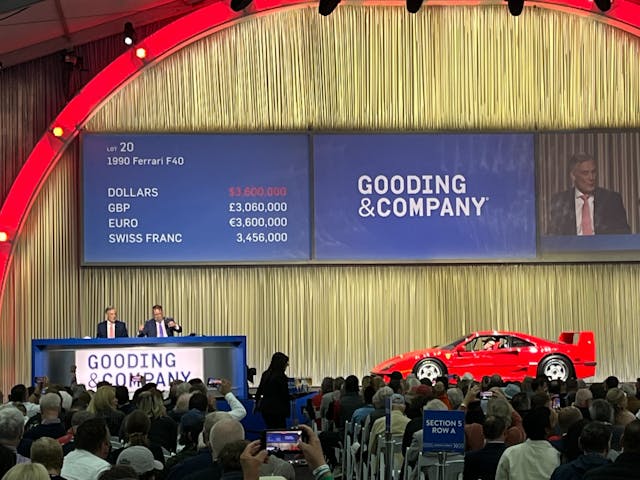
None of the pros we talked to disputed an element that we all love to hear: more and more people who buy classics want to put them to use. “A lot of people are buying cars for events,” said Hyman. “It’s a cool social scene and you need a toy to play the game, whether it’s the concours circuit, Mille Miglia, or the Colorado Grand.”
Brian Jannusch, the Sales Director at Toprank Importers, highlighted that for the JDM cars they import, part of the appeal is the approachability of a 25-35 year old car: “buyers see a Skyline and think, ‘I can figure out how to work on this thing.’” Jannusch also said he sees quite a few purchases that help bring generations together, offering an example of a father with a substantial Ferrari collection picking up some JDM classics for his two sons. “He doesn’t get the enthusiasm for Japanese cars,” Jannusch said, “but he’s glad they’re into cars and enjoys sharing that with them.”
Where the two camps diverged, however, was what evolving demographics meant for different types of cars. “I see a lot of younger people buying older cars, which is awesome,” shared Hyman, who noted that the 35-45 year olds who’ve bought Bugattis or Deusenbergs from him are typically interested in concours or having an interesting vehicle to share with their friends. “The best of the best will stay valuable,” he said, both in context of overall market forces and influences of new generations on older car values.
Beatty had a similar take. “It’s common for some to say that 1950s and 1960s cars are on the decline and while I’m generally one to brush off any broad generalizations, the stability in both sale rate and dollar values of this segment was pleasantly surprising to me this year,” he said. “Carroll Shelby’s ’55 Ferrari 410 Sport Spider was the most expensive car sold by a wide margin, showing that the blue-chip best stuff will always hold their value and soar above the rest of the market. Lancia Aurelias in their various forms, Duesenberg Model Js, Graham Hollywoods – ’50s sports cars, stately pre-war cars, and everything in between seemed to be selling strong from my perspective.”
John Temerian, Co-Founder of Curated, a sales and classic car purchase consulting business whose primary focus is 80s and 90s supercars, sees the market in a pivot. “There will always be buyers for the iconic automobiles of the 1950s and 1960s, but the demand has clearly changed. I do believe that many of today’s buyers are new to the market. They are a younger generation than ever: collectors age 35-55 with five, 15, even 50 cars.” He added that these new buyers are confident about the values of the cars from the 80s and 90s that they’re gravitating toward.
Jannusch agreed. “The age of collectors is dropping,” he said. “I frequently hear things along the lines of, ‘I inherited this GTO Judge from my dad and I don’t want it. I’d like to swap it for something that resonates with me.’ As Boomers age out of the hobby, we will see a consolidation. You’ll even see some blue-chip cars dropping a bit. The further you get from a particular era of car, the next generation is a little less interested in owning them.” For instance, Jannusch sees an increasingly finite market for prewar cars: “there used to be buyers galore for those cars,” he said, “but people are starting to ask themselves, ‘who am I going to sell this to down the road?’”
The answer to that question may be simple: an enthusiast. This answer splits the baby somewhat. Jannusch is right in that once no one has a personal tie to a car or an era, there are fewer reasons to prop up values, and the audience shrinks that much more. Hyman’s take, on the other hand, that meaningful cars will always have a place in the pantheon makes sense—it just might take a little more time and effort to place the right car with the right buyer.
Evolutions, revolutions
Influences on the current marketplace have ushered in a variety of changes for how classics are bought and sold. Some, like online auctions, have been revolutionary, and have in turn begun to impact traditional sales venues. Others are more evolutionary, like the gradual pace of enthusiasts pursuing more vehicles on a global scale.
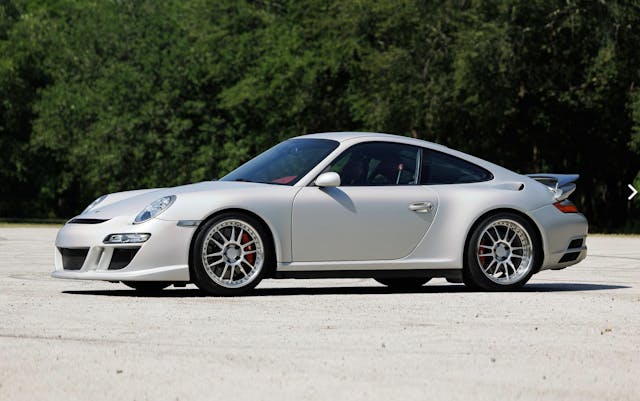
Tam-Scott highlighted what the broader marketplace means for traditional events: “The product mix this year at Monterey is so different than it was ten years ago. The auction houses are changing their offerings to align more closely with consumer demands. They’ve done a good job of adapting. To continue using Porsches as an example, for a while even special models were under $100,000 and not worth it for auction houses, but now they have proven otherwise, and we saw quite a few cross the block rather successfully last month.”
Just as online auctions have made people comfortable with making a significant purchase from their couch, so too has the internet expanded a buyer’s willingness to reach out to other geographies for the right car. “We’re seeing so many more people start to look at other parts of the world for inventory,” said Jannusch. “What we want to do is become a global car dealer,” he said, adding that Toprank is building the infrastructure to seamlessly inspect, import, and certify vehicles from all over the world in a one-stop-shop experience.
Buying and selling, buyers and sellers
With this year’s market move toward sanity from 2021, these pros have taken steps to adapt and noticed a few patterns along the way.
“We were cautious this spring, but not concerned, so we have a strong inventory right now,” said Hyman. “We had huge inventory in 2021 and started selling cars like crazy. This year, given the bigger picture, we throttled back slightly—nothing’s this good forever. It’s remained strong, though, and on a normal, non-2021 level, it’s been a fabulous year.”
Issimi’s business model is different, but still required an adjustment according to Tam-Scott. “For consignment, it’s about pricing the car in a way that it doesn’t sit around. It’s a more rational market, so buyers can afford to wait. When there’s an imbalance like that it can be a little harder, but ultimately I think it’s a healthy market.”
“BaT is always evolving with the market as a whole and our community’s interests,” said Beatty. “I can’t say we envisioned selling six-figure Telsa Roadsters (and electric F-150 Lightingings for that matter) back in 2014, but the demand for EVs is clearly present and we’re witnessing the rise of a new crop of enthusiasts along with it. We love fostering that enthusiasm in our marketplace.”
Conversations with sellers have evolved, too. Generally, these are savvy folks—it’s not the “I know what I’ve got” syndrome that became a meme in 2021. Still, Tam-Scott says he encourages those selling via Issimi to be responsive to the market. Nine-month-old comps no longer hold weight, and his team works to highlight as many recent data points as possible rather than focusing on single, potential outlier sales.
Beatty added that Bring a Trailer similarly works to manage expectations: “trees don’t grow to the sky, so we’re always mindful of setting sober reserves that are hopefully in line with constantly fluctuating market conditions.”
When asked whether the pace of consignors has slowed, Tam-Scott indicated it remained robust: “we have a lot of active clients who are moving through the market regardless of the overall economic outlook. We had issues with consignment volumes when the market was insane, but now because of the dynamic of cars not flying off the shelf by default and selling taking more effort, we see more cars coming in. We’re in a better position of having good cars because it’s a little more of a buyer’s market.”
Temerian indicated that buyers are engaged and chasing what they love: “most of the buyers today are motivated by passion—they want to learn, they want more knowledge. They are chasing the cars of their childhood in the most iconic colors, with the wildest history,” he said. “One of the Miami Vice Testarossa examples barely sold at auction five or six years ago. Today? I could sell the car 20 times over. It’s exciting to me that the buyers today are knowledgeable.”
While most buyers continue to be enthusiasts, Hyman noted the market uptick has brought a few more investment-oriented buyers to his door. “People ask what they should buy for investment. I tell them I don’t know—I’m not a financial planner. If I sell you this car and you love it, you won’t sell it. Up or down. You should buy because you’re passionate about it.” He added: “I won’t tell you I don’t pay attention to market forces—I do—but I’m in this because it’s my passion. I try to say the same thing to my clientele.”
Temerian agrees, and highlights that buyers know they can enjoy the investment while their money is parked in it. “While passion is the driving force, the investment aspect definitely crosses everyone’s mind. It is nice to know that you are buying something that has the potential to go up in value over the next 6-10 years, or at least not lose value. I hate to give financial advice, that’s not my goal. I love to share my passion and express what cars seem or feel undervalued.”
To this mix, Jannusch added a new layer: the crossover buyer. No, not soccer moms in lifted wagons. Rather, he means enthusiasts coming over from one brand to another. “Probably 75% of recent buyers who pick up a R32 or R33 Skyline GT-R from us also own a 911. What’s that rooted in? They’re curious about the other side. They hear the Skyline is a true driver’s car. That’s the same language that Porsche uses. People who own 911s love to tell you that they actually drive the car. Skylines have a massive race history, and Porsche guys love that. Those two so closely follow each other—both have an incredible amount of rare color and spec options. The more we see Porsche guys validating and driving Skylines, the more status they’ll gain, and that will continue to push prices.”
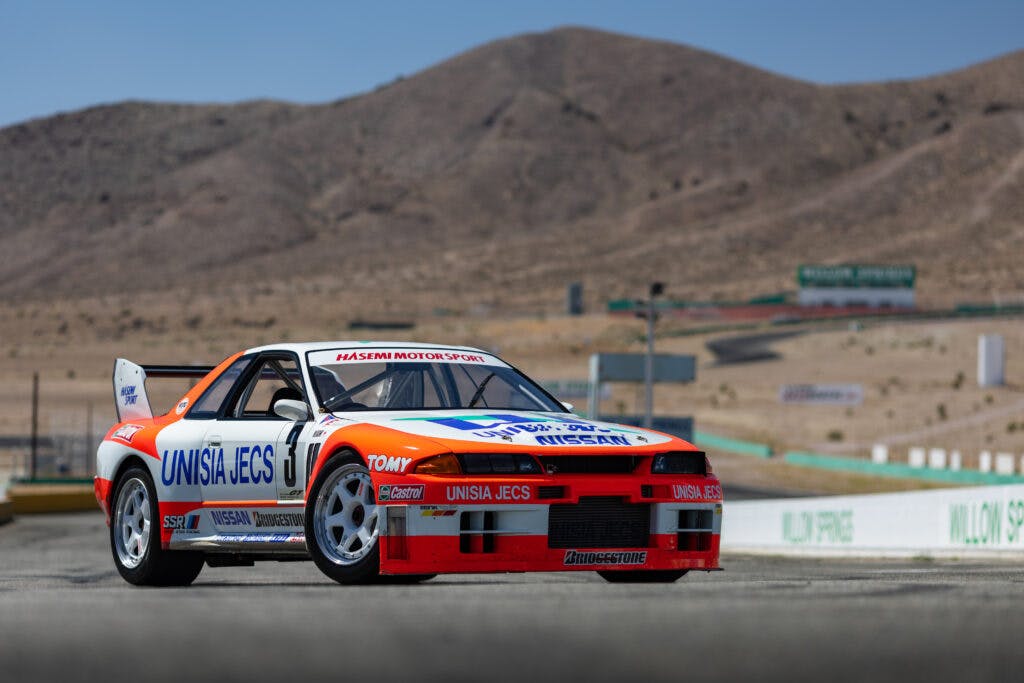
That push in prices has caused Toprank’s buyers to change over time. “Before we started Toprank, and when we were a smaller importer,” Jannusch said, “our primary buyer was a guy who drove a Nissan 240SX that saved up $10,000 to buy a GT-R. When we saw values go up to $25-40,000, we saw R35 GT-R owners come in to import a second car. Now, our typical buyer falls into one of three categories: first, they want one dream car and are willing to pay a lot for the nicest example they can afford. Second, they’re the collector that remembers when Porsche 993 Turbo prices were here and they want to buy now, and third: the massive collector who is cultivating interest in the car hobby with their child.
Crossing the threshold
Another area of consensus was the impact of a potential slow-down: perhaps unsurprisingly, all felt the top of the market was most insulated from a future downturn, and that less-significant cars would feel any potential brunt first. When asked if the collector car hobby is evolving into an art-world-style, permanently expensive market, each respondent pulled at a similar thread.
“I think that the cars that could potentially take this trajectory are the ones that are important and have had meaningful, lasting impact in the car hobby,” said Hyman.
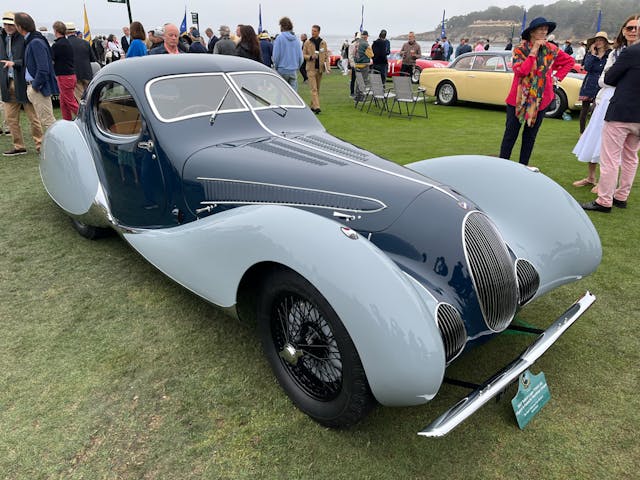
“It’s a generational thing, I think,” said Jannusch. “If you give me a massive amount of money to buy a painting, am I going to buy a Degas or a Warhol? I’d rather have a Warhol because it’s more relevant to me. That said, some artists like Van Gogh remain relevant because the innovative, immersive exhibits help keep his paintings fresh for younger people. The definition of what art people are willing to buy is the same as with cars: you have to have an attachment.”
Temerian offered another perspective on younger buyers as it relates to the art question: “these cars represent the next generation’s version of art. They are a symbol of culture, technological advances and many times tell the story of a designer, engineer or visionary who changed the world. The cars are usable art—they provide access to an amazing social world, filled with activities and camaraderie.”
Tam-Scott’s response suggested a pantheon of cars that is gaining, and occasionally losing, models. “I think there are certainly things that won’t come down for decades—these are cars that transcend demographic shifts. The 300SL’s sales history has demonstrated this. The Muira, as the origin of a type, fits in this conversation. F40s now belong here as well. Others will come down eventually: ’57 Thunderbirds are not that relevant to a new generation. To make a statement about the car market becoming like the art market, you need to segment collector cars more specifically.”
“The parallel with art is interesting, though,” he continued. “A car will cross over this gap. Once you cross that threshold you start paying for something other than what the car is itself, and there’s enough people who want it that it will never come down.”
Beatty offered the reminder we all appreciate—even if a car’s achieved “art” status, its use is what sets it apart. “I’m sure it’s delightful to look at your Jackson Pollock or wear your Newman Daytona to the bar, but with the automotive market you get the benefit of the experiential aspect behind the wheel in addition to the investment component. It’s really the best of both worlds. Much like art or watches, cars are purchased out of passion for the hobby, but cars have utility and offer experience in a way that few other investments do.”
That’s a wrap
Throughout his interview, Hyman offered a bit of levity in the face of market- and valuation-based questioning. His final take was a good reminder for all of us: “I tend to be pretty conservative about the marketplace,” he said. “There are segments that I think are overheated, but there’s so much interest, momentum, and committed people in this hobby that there’s nothing to worry about overall. Metrics and values are important, but they’re tertiary as to why we’re in this hobby. Number one is passion: demand and values are two and three. None of us are buying vintage cars because we need them or because they’re how we get to work. We’re buying them for one reason: passion. That’s what we need to focus on.”
***
Check out the Hagerty Media homepage so you don’t miss a single story, or better yet, bookmark it. To get our best stories delivered right to your inbox, subscribe to our newsletters.

